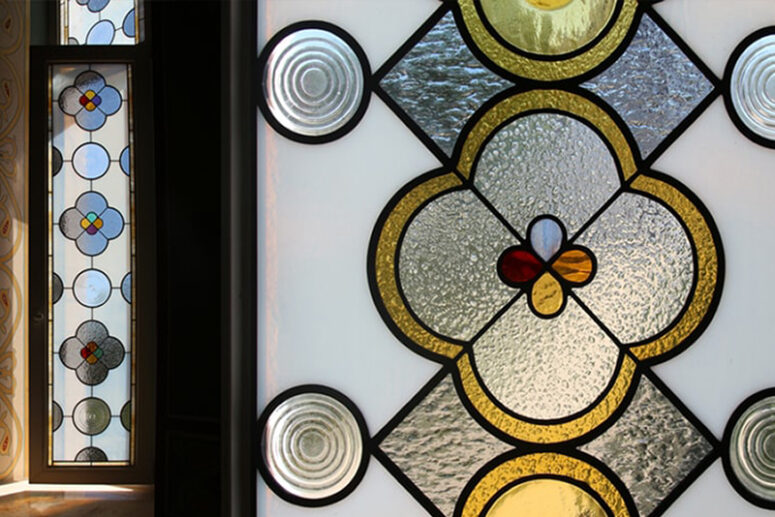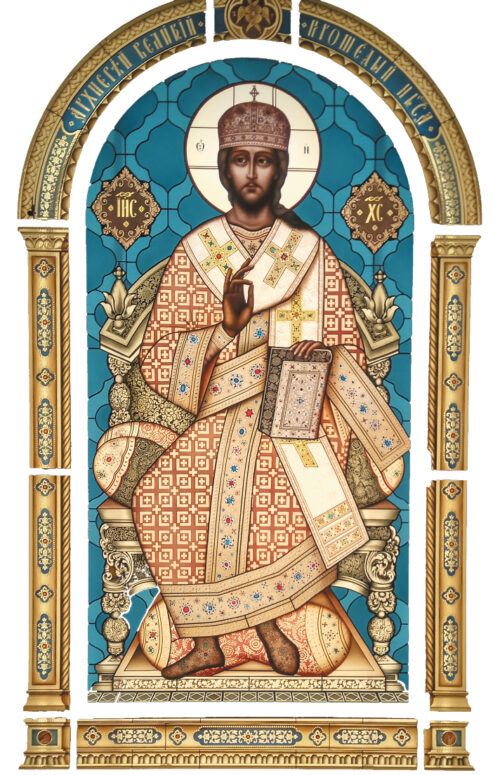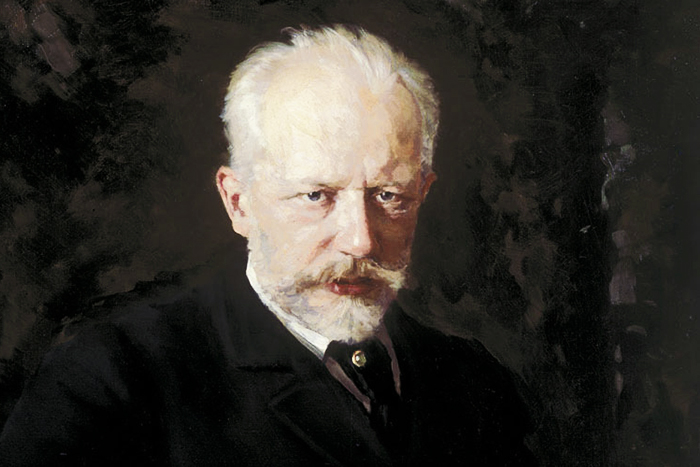
We associate stained glass with Gothic temples. However, it also plays a sacred role in Orthodox churches. The first stained glass windows appeared in Byzantium. Their fragments are kept in the archaeological museum of Constantinople. In Russia, colored glass has been inserted into drum openings and altar barriers since before the Mongol yoke. However, due to its brittleness it was impossible to use it in the creation of icons.

Stained glass windows began to appear in homes and churches as early as in the 17th century. But they did not become widespread until the end of the 19th century. During the construction of the Kazan Cathedral in St Petersburg, Karl Bryullov suggested creating an opening in the altar wall and placing a stained-glass window there to highlight the sacred image. His idea was not approved, but a similar stained glass window appeared in St Isaac’s Cathedral with a personal approval of Emperor Nicholas I. The large-scale altarpiece of the risen Savior is probably the first figurative stained glass window in a Russian Orthodox church. Most Russian-Byzantine style churches of the early 20th century had stained glass windows, so the Russian craftsmen learned to make them.
This tradition is now being revived. Stained-glass windows are usually placed on the Eastern wall to highlight the altar as the most sacred place in the church. In most cases, the images used in the altar windows represent Christ on the throne or the Resurrection scene. It is the luminosity of stained glass that symbolically conveys the idea of paradise. The problem of fragility has also been solved. Modern stained glass windows are very durable and almost imperishable.
Dmitry Trofimov, head of the Tsargrad creative workshops
Translated by The Catalogue of Good Deeds
Source: https://foma.ru/vitrazhi-v-pravoslavnyh-hramah-tak-byvaet.html




